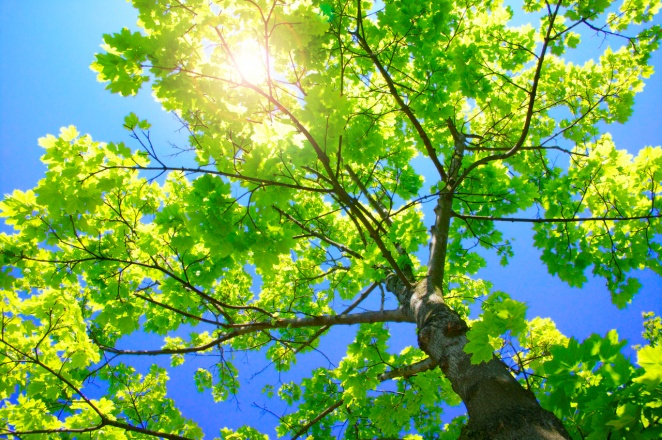Item RG071003: During photosynthesis, energy is required to separate atoms of the reactants. This amount of energy is greater than the amount of energy released when atoms connect to form the products.
A chemical reaction called photosynthesis occurs in a tree as the sun shines on it. During this reaction, water and carbon dioxide molecules (the reactants) react to form glucose and oxygen molecules (the products).

When the atoms that make up the reactant molecules are separated, is energy taken in or released? How does that amount of energy compare to the energy involved in forming the product molecules?
- Energy is required to separate atoms of the reactants. This amount of energy is less than the amount of energy released when atoms connect to form the products.
- Energy is required to separate atoms of the reactants. This amount of energy is greater than the amount of energy released when atoms connect to form the products.
- Energy is released when atoms of the reactants are separated. This amount of energy is greater than the amount of energy required to connect the atoms to form the products.
- Energy is released when atoms of the reactants are separated. This amount of energy is less than the amount of energy required to connect the atoms to form the products.
- Distribution of Responses

- Scale Score for Item Difficulty
(200[Easy]-800[Difficult]) - 525
- Students Responding Correctly
| Group | Correct | Total | Percent |
|---|---|---|---|
| Overall | 673 | 2371 | 28% |
| Grades | |||
| 4–5 | N/A | N/A | N/A |
| 6–8 | 340 | 1301 | 26% |
| 9–12 | 333 | 1070 | 31% |
| Gender | |||
| Male | 302 | 1128 | 27% |
| Female | 358 | 1199 | 30% |
| Primary Language | |||
| English | 568 | 2037 | 28% |
| Other | 86 | 277 | 31% |
- Disciplinary Core Ideas
- PS1.A A stable molecule has less energy than the same set of atoms separated; one must provide at least this energy in order to take the molecule apart.
PS1.B Chemical processes, their rates, and whether or not energy is stored or released can be understood in terms of the collisions of molecules and the rearrangements of atoms into new molecules, with consequent changes in the sum of all bond energies in the set of molecules that are matched by changes in kinetic energy.

